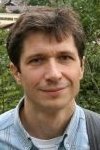Prof. Dr. Aleksei ZHELTIKOV
Prof. Aleksei ZHELTIKOV
Image: PrivateProf. Aleksei Zheltikov is visiting the Faculty of Physics and Astronomy as an ASP Visiting Professor in 2012. Currently, he is Professor of Physics at the Physics Department and International Laser Center of M.V. Lomonosov Moscow State University and Professor of Physics at the Department of Physics and Astronomy at Texas A&M University. He also runs Neurophotonics Lab at Kurchatov Institute Russian Research Center. Prof. Zheltikov received his PhD degree from Moscow State University in 1990 and his Doctor of Science degree from the same university in 1999. He is a full professor at this university since 2000. His research interests include ultrafast nonlinear optics, nonlinear spectroscopy and imaging, nonlinear optics of specialty fibers, and methods of photonics in neuroscience. He has authored three monographs, more than 10 book chapters, and over 400 publications in peer-reviewed journals. Prof. Zheltikov is a winner of the 1997 Russian Federation State Prize for young scientists, 2001 Shuvalov Prize for Research, and 2010 Willis Lamb Award for achievements in laser science and quantum optics. He has been a guest professor at Max Planck Institute for Quantum Optics and Vienna University of Technology and was selected a Distinguished Visitor under the Scottish Universities Physics Alliance program.
Lecture 1: Tailoring Ultrashort Lightwaves with Photonic-Crystal Fibers: From Quantum Physics to Biosciences
Time: January 13, 2012, 14:00
Place: Fraunhofer IOF Jena, Carl-Zeiss-Saal, Albert-Einstein‐Str. 7, 07745 Jena
Enhanced nonlinear-optical processes in waveguide modes of novel optical fibers offer unique opportunities for ultrafast optical science and lightwave technology. Photonic-crystal fibers, where dispersion and nonlinearity can be tailored with a high precision through structure engineering, enable the creation of novel types of fiber-optic sources of ultrashort light pulses. Special strategies of micro- and nanostructuring of the core and the cladding of optical fibers help to realize efficient spectral and temporal transformation of laser pulses with input pulse widths from tens of nanoseconds down to several field cycles within the range of peak powers from hundreds of watts up to several gigawatts. This course will provide a brief introduction into the fundamentals of guided-wave optics and photonic-crystal fibers, followed by an overview of nonlinear-optical phenomena in PCFs, as well as applications of PCF sources and PCF-based solutions in nonlinear microspectroscopy, bioimaging, high-field physics, and photonics of few-cycle field waveforms.
Audience: upper level undergraduate seniors, graduate students majoring in optics and physics
Pre-requisites: Electromagnetic waves, optics
Lecture 2: Laser-induced filamentation: an ultrabroadband source of ultrashort electromagnetic field waveforms
Time: June 29, 2012, 11:00
Place: IPHT Jena, Sitzungssaal, Albert-Einstein-Straße 9, 07745 Jena
Filamentation of ultrashort laser pulses is an interesting physical phenomenon involving an intricate nonlinear dynamics of high-power broadband ultrashort field waveforms where spectral and temporal transformations are strongly coupled to a complex spatial beam dynamics. Along with intriguing physical scenarios, laser-induced filamentation offers unique solutions for long-distance transmission of laser radiation, atmospheric remote sensing, and generation of few-cycle field waveforms within a remarkably broad spectral range, stretching from the terahertz to the x-ray region. This talk will give an overview of the recent discoveries and technological breakthroughs in this rapidly growing area of ultrafast optical science.
Lecture 3: Nonlinear optics with Photonic Crystal Fibers
Time: July 3, 2012, 14:15
Place: Lecture Hall 2, Abbeanum, Fröbelstieg 3, 07743 Jena
Optical fibers are changing their structure. Fibers of a new architecture -- photonic-crystal fibers (PCFs) -- are emerging as a powerful tool for ultrafast optics, optical metrology, and nonlinear microspectroscopy. These fibers offer an unprecedented control over waveguide dispersion and are therefore ideally suited for the generation, management, and nonlinear-optical transformations of ultrashort light pulses. In this talk, we will discuss the physical mechanisms behind the enhancement of nonlinear-optical processes in PCFs, allowing the creation of efficient fiber-format frequency shifters and supercontinuum sources for nonlinear spectroscopy and microscopy. Different classes of PCFs will be shown to offer new, often unique, solutions to the most challenging tasks of optical physics, including efficient frequency shifting in small-core PCFs, high-energy supercontinum generation in large-mode-area PCFs, and nonlinear-optical transformation of high-peak-power laser pulses and megawatt soliton generation in hollow-core PCFs.
